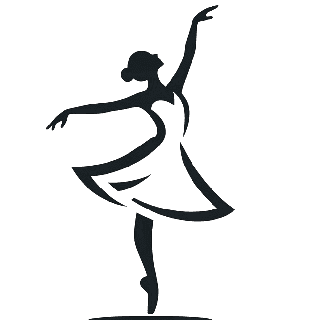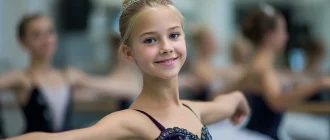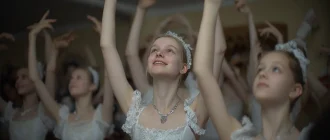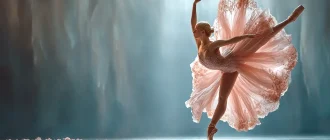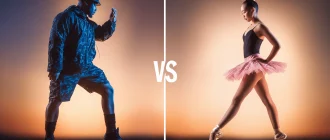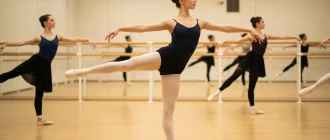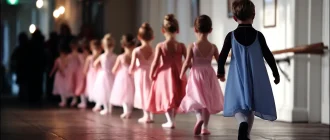Looking for the best ballet in South Korean schools? This article presents the top ballet institutions, highlighting their unique programs, training methods, and opportunities for aspiring dancers. Discover what each school offers to help you achieve your ballet dreams.
Key Takeaways
- Korea National University of Arts (K-Arts) offers a comprehensive dance theory and performance curriculum. Students have numerous opportunities to showcase their skills.
- Sunghee Ballet Academy caters to all ages with tailored programs, including a Summer Intensive that helps advanced students refine their ballet technique.
- Universal Ballet Academy utilizes the Vaganova method for rigorous training. It prepares students for professional careers through personalized mentorship and performance opportunities.
Best Ballet Schools in South Korea Podcast
| School (est.) | Level / Credentials | Signature strengths | Notable alum* |
|---|---|---|---|
| Korea National University of Arts – School of Dance (K‑Arts) | University BFA / MFA + gifted‑youth division | Vaganova‑based syllabus; 13‑student technique classes; active international competition circuit | Park Sae‑eun (Paris Opéra), Kimin Kim (Mariinsky), Joo Won Ahn (ABT) |
| Korea National Ballet Academy (KNB) | Company‑affiliated pre‑professional academy | Direct pipeline to the national troupe; master‑class mentorship from KNB principals | Many current KNB soloists & principals |
| Sunhwa Arts Middle & High School | Elite middle/high arts magnet | Classical‑ballet major; Little Angels Performing Arts Center on campus | Hee Seo (ABT), Kang Sue‑jin (Stuttgart Ballet) |
| Seoul Arts High School (YEGO) | High‑school arts powerhouse | Rigorous dance curriculum plus academics; grads win Prix de Lausanne scholarships | Ji Young Chae (Boston Ballet) |
| Universal Ballet Academy | Company school (Universal Ballet) | Daily company‑style coaching, Vaganova roots, frequent stage exposure | Julia H. Moon (former prima) |
| Yewon School | Elite Arts Middle School | Early‑talent identification; strong bridge to YEGO & K‑Arts | Sun Woo Lee (Boston Ballet) |
| Ewha Womans University – Dept. of Dance | University BA / MA | Ballet‑pedagogy research hub; resident Ewha Ballet Ensemble | Prof. Shin Eun‑kyung (choreographer) |
Korea National University of Arts (K-Arts)
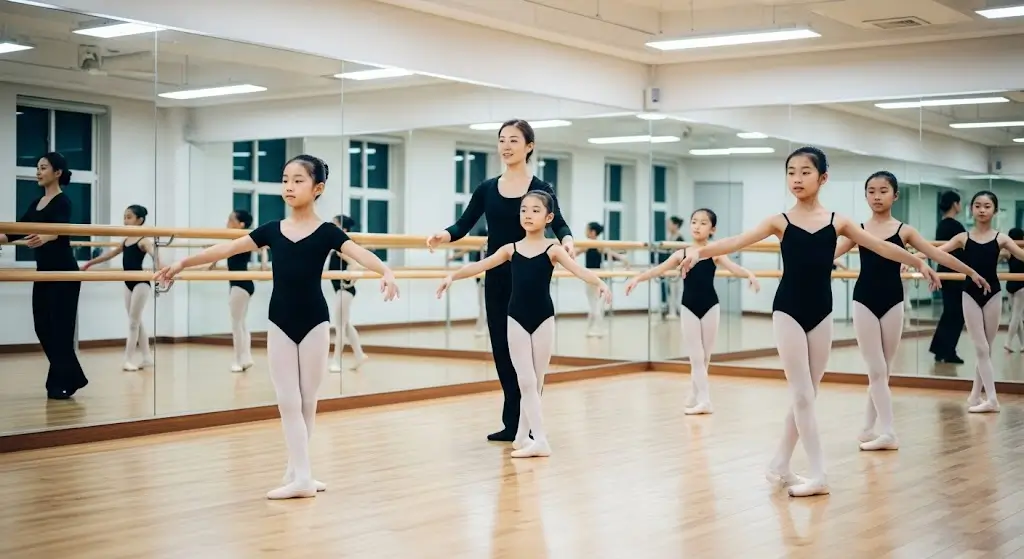
Korea National University of Arts, often called K-Arts, excels in South Korean ballet education. The institution offers a demanding curriculum that integrates both performance and theoretical aspects of dance.
K-Arts is globally recognized for producing skilled dancers through rigorous programs emphasizing practical and theoretical facets of dance.
College Program
K-Arts’ college program is crafted to develop aspiring dancers professionally. Most dancers start their bachelor’s program at age 18, with some exceptionally talented students being admitted as young as 15. Students can specialize in dance performance, choreography, or theory, honing their strengths. The ballet curriculum uses a matrix system to tailor the educational experience to each discipline.
Performance Opportunities
K-Arts offers numerous performance opportunities to develop stage presence. The university hosts an Experimental Dance Festival for students to present and perform their choreographed works. The KNUA Dance Company, run by teachers at K-Arts, allows students to gain direct performance experience under faculty guidance.
Annual showcases and participation in the KNUA Dance Company provide students with valuable stage experience, enhancing their performance abilities and building confidence.
Sunghee Ballet Academy
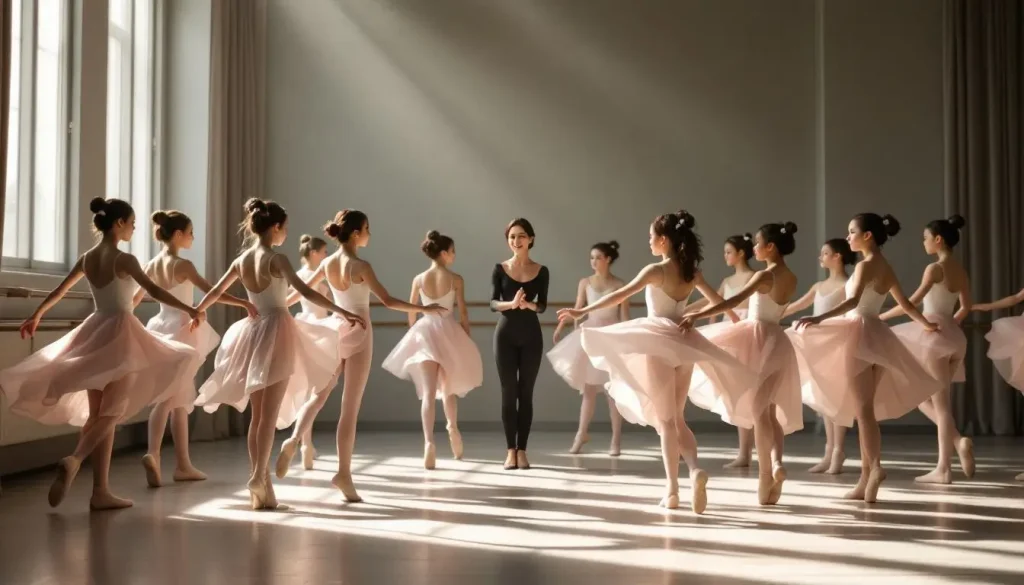
Sunghee Ballet Academy is known for its comprehensive ballet programs. Its classes are tailored to various age groups and skill levels, catering to children and adults.
Students, especially long-term attendees, show significant progress in their ballet training through practice, hard work, and dedication.
Ballet Programs
Students at Sunghee Ballet Academy are assigned to levels matching their age and skill, ensuring personalized training. The program caters to various age groups and skill levels, from beginners to pre-professionals.
This structure allows students to progress independently with teachers who provide guidance and support.
Summer Intensive Programs
The five-week Summer Intensive Ballet Program at Sunghee Ballet Academy focuses each week on enhancing intermediate and advanced students’ skills and strength in ballet technique, pushing them to new heights in their training and performance.
Universal Ballet Academy
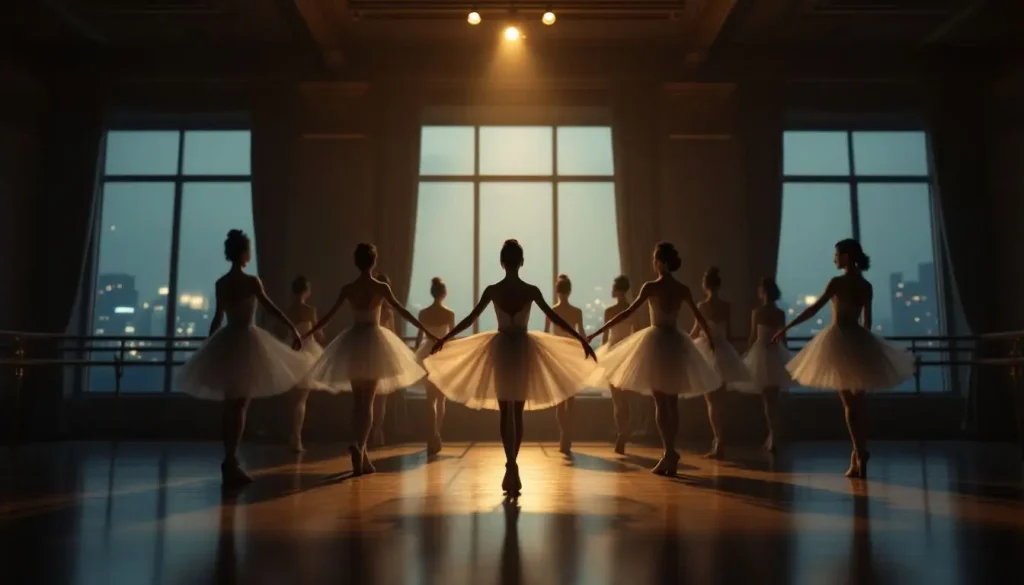
Universal Ballet Academy is noted for its rigorous training and use of the effective Vaganova method. It focuses on personal growth and artistic development, ensuring comprehensive ballet education.
Recognized as a top ballet training institution in South Korea, Universal Ballet Academy is dedicated to nurturing aspiring dancers.
Technique Classes
The academy offers diverse technique classes, including classical ballet, contemporary, and modern dance. Specialized training in pointe work and various techniques ensures students develop a well-rounded skill set.
This approach helps students focus on foundational techniques while exploring various Dance styles and a specific dance style.
Professional Pathways
Universal Ballet Academy integrates performance opportunities and mentorship to prepare students for professional careers. During the Vaganova Training stage, students master techniques and gain the experience needed to transition into careers with professional ballet companies.
The academy’s tailored guidance ensures each student is performance-ready and equipped for a successful dance career.
Seoul Arts High School
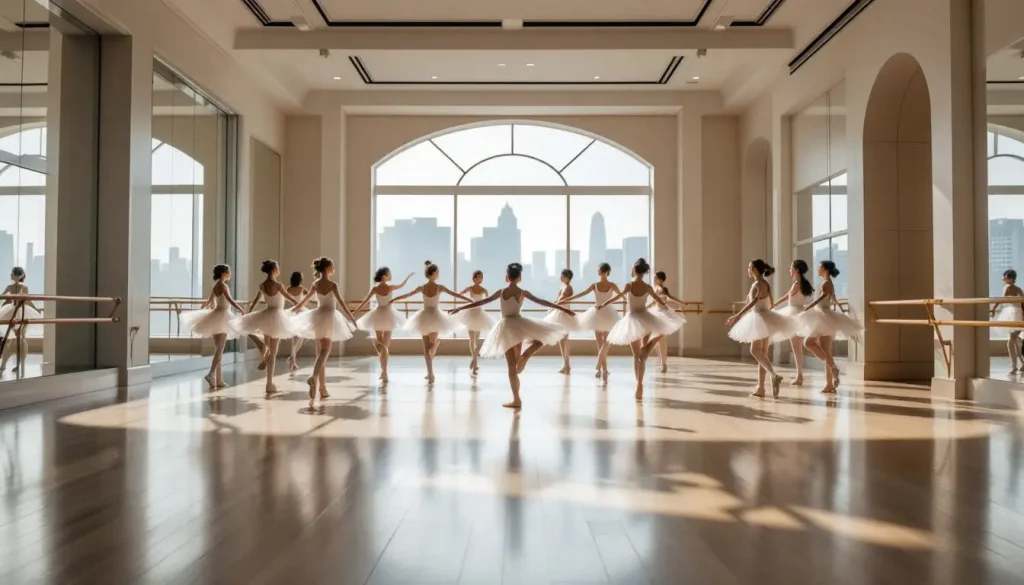
Seoul Arts High School is known for its specialized curriculum for gifted dancers. It combines practical knowledge with theoretical aspects to develop world-class dance artists.
Its intensive curriculum nurtures talented dancers through a program integrating dance history and academic education.
Early Age Training
Early ballet training is central to Seoul Arts High School’s teaching philosophy. Early training nurtures talent, helping young dancers develop fundamental skills, flexibility, and technique at the beginning of ballet school.
This early focus lays the foundation for successful dance careers.
Academic Balance
Seoul Arts High School balances intensive dance training and choreography with academic studies, ensuring a well-rounded education and preparing students for diverse opportunities.
Balancing rigorous dance education with academics ensures comprehensive development and success.
Yewon School
Yewon School is known for providing foundational dance education. Its focus on technique and performance prepares students for professional ballet careers. Many successful alums have joined prestigious ballet companies globally, showcasing the effectiveness of their training.
Dance Studies Curriculum
The dance studies curriculum at Yewon School includes comprehensive training in classical ballet and contemporary dance, ensuring students are equipped to excel in various styles.
Training in both classical and contemporary techniques prepares students for diverse career opportunities.
Alumni Success
Yewon School alums have joined prestigious ballet companies both in South Korea and internationally, inspiring aspiring dancers and highlighting the school’s quality of education and training.
The achievements of these graduates reflect the school’s commitment to nurturing talent and preparing students for successful dance careers after graduation.
Korean National Ballet Academy
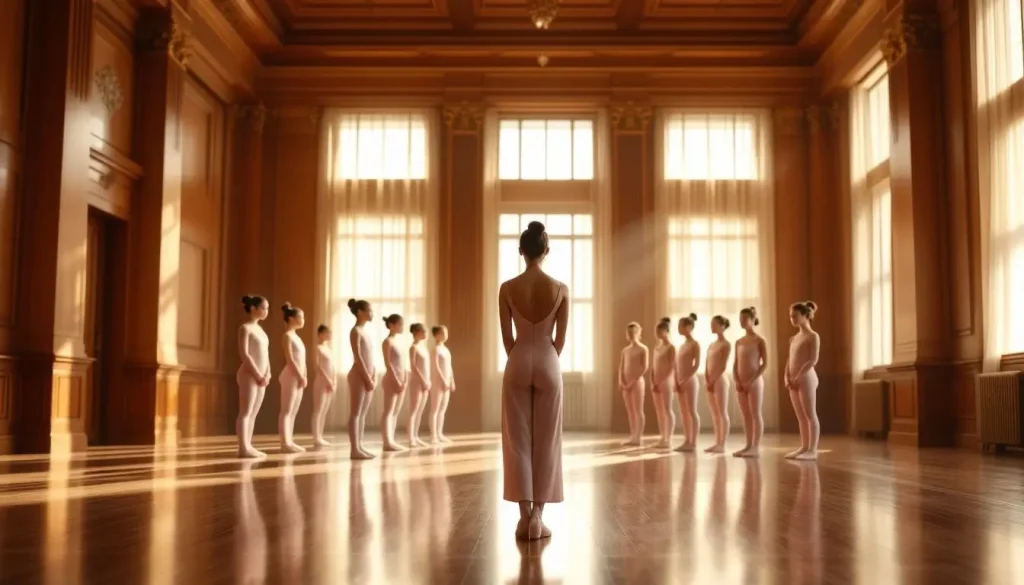
Established in 1993, the Korean National Ballet Academy is affiliated with the Korea National Ballet and aims to educate future ballet dancers domestically. Renowned for its rigorous training, the academy provides access to professional performances, ensuring its members have high standards of education and opportunities.
The academy is dedicated to cultivating future national ballet and music leaders.
Advanced Training Programs
The academy offers advanced training programs for intermediate and advanced dancers. These programs focus on refining technique and artistry to prepare students for professional careers as dancers.
The academy’s rigorous training and selection process emphasizes artistic and technical potential.
Choreography and Performance
Choreography knowledge and performance skills are integral to Korean National Ballet Academy training. Emphasis on these skills prepares students for professional careers in dance.
Academy performance workshops encourage creativity in practice and a sense of individual expression, which is essential for aspiring dancers.
Busan International Dance Academy
Busan International Dance Academy is known for its structured approach to dance education. The academy progresses students through various levels, from Junior Ballet to Pre-Professional and Vaganova Professional Academy, ensuring comprehensive and systematic training.
Diverse Dance Styles
The academy offers training in multiple dance styles, including ballet, contemporary, and modern dance, allowing students to develop a versatile skill set.
Including genres and classes like hip-hop and street dance ensures students receive a well-rounded education, preparing them for diverse opportunities.
International Faculty
The Busan International Dance Academy features experienced instructors from various countries, enhancing the global perspective of its education. These instructors bring diverse expertise and teaching methods, enriching students’ learning experience.
An international faculty ensures students receive a high standard of education and exposure to different cultural approaches to music and dance.
Resume
In conclusion, South Korea offers a plethora of exceptional ballet schools, each with unique strengths and programs. From the rigorous training at K-Arts to the diverse dance styles at Busan International Dance Academy, these institutions are dedicated to nurturing talent and preparing dancers for professional success. Aspiring dancers can find their perfect fit among these top ballet schools, each providing the guidance, training, and opportunities needed to achieve their ballet dreams.
Frequently Asked Questions
What makes K-Arts a leading institution for ballet education?
K-Arts stands out for its rigorous dance curriculum that blends practical and theoretical training, effectively preparing students for successful careers in ballet. No wonder they are regarded as a top choice for aspiring professional dancers!
What types of programs does Sunghee Ballet Academy offer?
Sunghee Ballet Academy offers a range of ballet classes for various age groups and skill levels, along with summer intensive programs for advanced students. You’ll find something that fits your needs, whether you’re a beginner or more experienced!
How does Universal Ballet Academy prepare students for professional careers?
Universal Ballet Academy prepares students for professional careers by offering a curriculum emphasizing performance opportunities and mentorship. Classes also strongly focus on teaching and mastering techniques through the Vaganova Training method. This hands-on approach ensures students are well-equipped for the demands of the professional dance world.
What is unique about Seoul Arts High School’s approach to ballet training?
Seoul Arts High School stands out for its focus on early ballet training, which is blended with a strong academic curriculum. This ensures students excel in their dance form and receive a comprehensive education.
How does Busan International Dance Academy enhance the learning experience for students?
Busan International Dance Academy enhances students’ learning by offering a diverse faculty, which brings varied expertise and global perspectives to the teaching methods. This rich environment truly enriches the dance experience!
Are South Korean ballet schools open to international students?
Yes. Major institutions such as Korea National University of Arts (K‑Arts) and Sungshin Women’s University actively recruit dancers from abroad through dedicated foreign‑admission quotas, so mixed‑nationality classes are common in Seoul.
Which visa do I need to study ballet full‑time in Korea?
Full‑time degree or exchange students usually enter on a D‑2 student visa, issued after they secure an admission letter and proof of finances. Short‑term tourist visas do not allow enrollment.
Is Korean fluency required, or are classes taught in English?
Daily technique is generally delivered in Korean, but most schools run intensive language programs and some academic subjects in English. Advanced TOPIK holders may skip the language prep.
What does tuition cost at Korean ballet programs?
University‑level dance majors average ₩4.8 million to ₩7 million (about US$ $4,500–$7,000) per academic year, considerably lower than comparable conservatories in the United States or Europe.
Are there scholarships for international dancers?
The fully funded AMA+ Scholarship at K‑Arts covers tuition, airfare, medical insurance, a monthly stipend, and mandatory language courses. Other universities offer partial tuition waivers or dormitory fee reductions.
How competitive is admission?
Top programs admit only a dozen or so ballet majors per class, and arts high schools screen applicants with academic exams and live auditions, so acceptance rates are often in the single digits.
What age range do programs accept?
Gifted‑youth tracks start around age nine, pre‑college divisions run through eighteen, degree programs begin at about nineteen, and separate “adult hobby” academies welcome dancers well into their forties and beyond.
What audition materials are usually required?
Expect a resume, academic transcripts, two recommendation letters, full‑body photos in first arabesque and à la seconde, a three‑to‑five‑minute classical variation video, and a brief personal statement.
Do Korean schools offer summer intensives or short‑term programs?
Yes. Many universities run summer and winter short courses that accept visiting students for technique, repertoire, and character classes, providing a low‑commitment way to sample Korean training.
Is campus housing available?
Most universities operate dormitories; shared rooms typically start around ₩235,000 per month, making on‑campus living the most affordable option for international students.
What is the monthly cost of living in Seoul for a dance student?
Plan on roughly ₩1.5 million (about US $1,100) per month, including housing, transit, food, and basic supplies—comparable to Prague and far below New York City.
Are there programs for absolute‑beginner adults?
Seoul’s “adult hobby” studios—such as Genie Ballet and the amateur division of Korea National Ballet Academy—offer leveled evening classes with no audition, some taught in basic English.
Which teaching methods dominate Korean ballet training?
The Vaganova syllabus underpins most curricula, adapted for Asian physiques, while RAD and Balanchine electives are common in private studios.
How much stage time do students receive?
University dancers perform in school productions, competition galas, and collaborative projects—often six or seven shows per semester—providing near‑professional performance exposure.
Do schools partner with professional companies?
Yes. The Korean National Ballet Academy and Universal Ballet trainee track feed directly into their resident companies, and K‑Arts students frequently apprentice on touring productions.
What kind of injury‑prevention or medical support is provided?
Campus clinics offer on‑site physical therapy with sprung‑floor rehabilitation rooms, and degree plans include anatomy and dance science coursework.
How does Korean training compare to Russian or American schools?
Like Russia, programs emphasize long daily schedules and a structured eight‑year progression, but Korea blends in liberal‑arts coursework similar to American conservatories to produce artist‑scholars.
Who are some notable alumni of Korean ballet schools?
Graduates include Mariinsky principal Kimin Kim, Paris Opéra étoile Sae Eun Park, Dutch National principal Young Gyu Choi, and American Ballet Theatre soloists Joo Won Ahn and SunMi Park.
